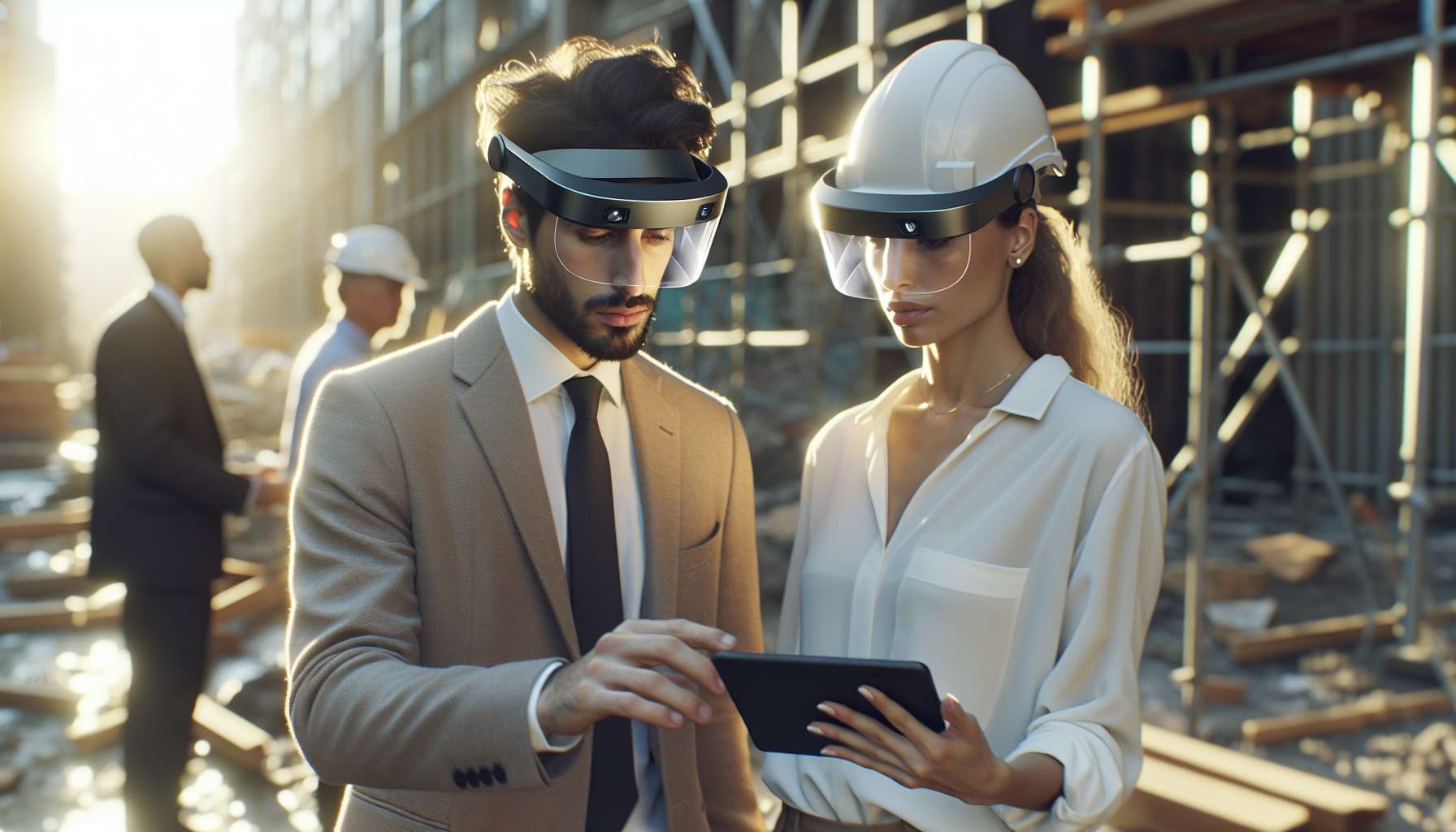Enhancing Construction Presentations with Augmented Reality
As the construction industry continues to evolve, so does the need for innovative technologies that can streamline processes and improve communication. One such technology that is revolutionizing the way construction companies present their proposals and engage with clients is augmented reality (AR). By integrating virtual elements into the real world, AR is transforming the way construction projects are visualized and communicated.
What is Augmented Reality?
Before we delve into the benefits of AR in construction presentations, let’s briefly explain what augmented reality is. Augmented reality is a technology that overlays digital information, such as 3D models, images, and animations, onto the real world. It enhances the user’s perception of reality by blending virtual elements with the physical environment, typically through the use of a smartphone, tablet, or specialized AR glasses.
Transforming Client Presentations
Traditionally, construction companies relied on 2D drawings, blueprints, and physical models to showcase their designs to clients. However, these methods often fell short in effectively conveying the vision and scale of the proposed project. With AR, construction professionals can now create immersive and interactive presentations that bring their designs to life.
Imagine being able to show clients a realistic 3D model of their future building, complete with accurate dimensions, materials, and finishes. With AR, clients can walk through virtual spaces, explore different design options, and even visualize how the building will look in its actual location. This level of interactivity not only enhances client engagement but also helps to build trust and confidence in the proposed design.
Streamlining Proposal Processes
AR is not only transforming client presentations but also streamlining the proposal process for construction companies. With AR-enabled devices, architects and engineers can overlay proposed designs onto existing structures or landscapes, allowing clients to see how the new project will fit into its surroundings. This eliminates the need for costly physical mock-ups or time-consuming site visits.
Furthermore, AR can assist in identifying potential design flaws or clashes before construction begins. By visualizing the proposed design in the real world, construction professionals can detect any issues and make necessary adjustments early on, saving both time and money. This level of efficiency and accuracy in the proposal process can significantly improve project outcomes and client satisfaction.
Real-World Examples and Results
Several construction companies have already embraced AR technology and are reaping the benefits. For instance, a major architecture firm used AR to showcase a proposed skyscraper to potential investors. By allowing investors to virtually explore the building’s interior and exterior, the firm was able to secure funding and move forward with the project.
In another example, a construction company utilized AR to guide workers during the construction of a complex structure. By overlaying digital instructions onto the physical environment, the company reduced errors and improved overall productivity, resulting in significant time and cost savings.
The Future of AR in Construction
The potential applications of AR in construction extend far beyond client presentations and proposals. As the technology continues to advance, we can expect to see AR being used for on-site training, remote collaboration, and even maintenance and repair tasks. The integration of artificial intelligence (AI) with AR further enhances its capabilities, allowing for real-time data analysis, predictive modeling, and intelligent decision-making.
With the increasing adoption of AR in the construction industry, it is clear that this technology is here to stay. Construction companies that embrace AR now will gain a competitive edge by delivering more immersive and engaging presentations, improving project outcomes, and ultimately enhancing client satisfaction.
So, if you’re a construction professional looking to transform your client presentations and streamline your proposal processes, it’s time to explore the possibilities of augmented reality. Embrace the power of AR and unlock a new level of communication and visualization in the construction industry.





